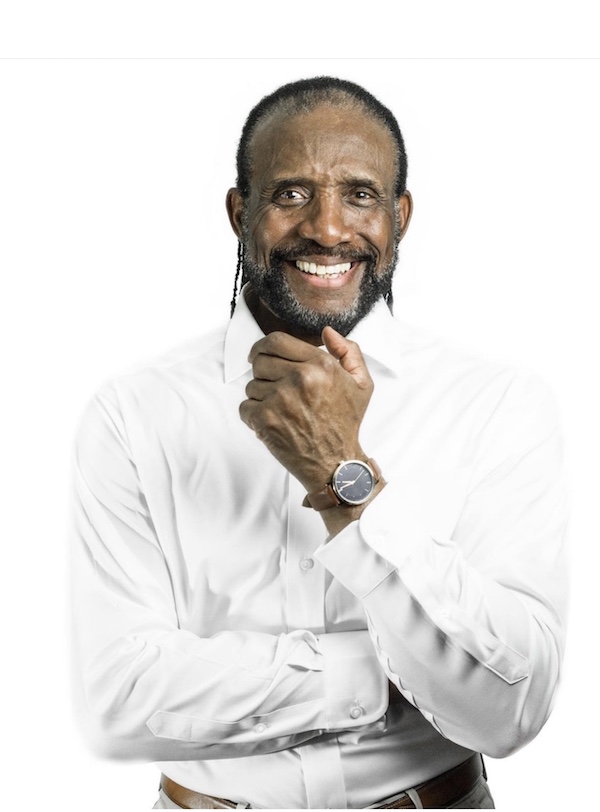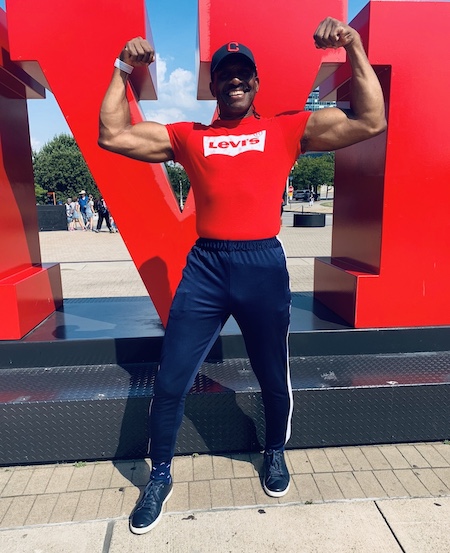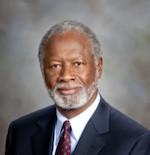Akil Marshall served as strength and fitness coach for Cleveland CAVS 1984-1988

Bryan “Akil” Marshall, known throughout Northeast Ohio and beyond for leading Dance Afrika Dance as well as being a national educational consultant, made National Basketball Association (NBA) history when he became the first strength and fitness coach in the league for the Cleveland Cavaliers in 1984.
According to Marshall, who taught fitness classes at the Scandinavian Fitness chain and conducted a televised fitness show at the time, former NBA star and current radio analyst for the Cleveland Cavaliers Jim Chones took notice of his approach to physical conditioning as a result of Chones’s wife taking Marshall's fitness class.
“Jim Chones said, ‘I had to come meet you. You’re all my wife is talking about at the dinner table,’” recalls Marshall.
Chones told The Real Deal Press during a phone interview that Marshall’s class was so popular, people were lined up to take it and it left all the windows steamed up. Thinking Marshall’s techniques could help The Cavaliers win more games, Chones introduced him to Harry Weltman, the team’s general manager.
“The NBA didn’t have strength coaches back then,” says Marshall. Chones agrees, saying there were no strength and fitness trainers when he played, and he believes Marshall was the first.
“It was taboo for the NBA players to do weight training,” Marshall adds. Weltman liked the idea.
“It didn’t take a lot of convincing,” says Marshall. “I didn’t understand it at the time, but Weltman came from the American Basketball Association, the ABA, and they were doing some innovative things. He was an idea man.”
Weltman connected Marshall to Cavs head coach George Karl. Marshall remembers meeting Karl at the Tavern of Richfield. Karl was for Marshall working with the team, Marshall says, but for different reasons.
“Karl wanted me to help with players who were messing around with drugs,” says Marshall.
Karl introduced Marshall to then trainer Gary Briggs. Marshall says Briggs wasn’t sure if the players would take to it but hired him anyway. And the rest is history.
“I don’t think we had a serious muscle injury that year,” says Chones. “[Marshall] was the best.”
Marshall explains that strength and fitness training can lengthen a player's career, in addition to reducing the likelihood of injuries.
Marshall went on to work with the Cavaliers for 4 years, assisting players such as World B. Free, Mel Turpin, John Hot Rod Williams, Phil Hubbard, Mark West, Chris Dudley, Mark Price, Craig Ehlo and others. Marshall would also attend therapy appointments at the Cleveland Clinic with the players. And, Marshall says, they did win more games, had fewer injuries and started going to the playoffs. Some players, like Price, who hired Marshall during the offseason, became all stars.

Akil Marshall, standing left, with the 1984-85 Cavaliers
“He was ahead of his time,” says Hubbard, who played in the NBA from 1979 to 1989. He doesn’t recall Detroit having a strength and fitness trainer when he entered the league and says he, along with West, were the first Cavalier players to work out with Marshall.
“He opened my mind to how weights can help my career. We started seeing results,” Hubbard says.
Hubbard also says Marshall discussed diet with the players. “He got us to do things that were not in our regimen. He was very dedicated and passionate, motivating as well.”
Dudley described himself as a “thin player,” coming into the league as a rookie for the Cavaliers and, as a center/power forward, needed to get stronger. “The training allowed me to compete at that level, making that training a part of my ritual. I was glad he was there. I needed it,” says Dudley. He played 16 seasons.
Briggs later introduced Marshall to other NBA coaches and trainers who adapted his approach. Marshall says the Chicago Bulls, San Antonio Spurs, Seattle Supersonics and New Jersey Nets (now Brooklyn Nets were among the first teams to implement this approach.
“Now, every team has them,” says Chones. Dudley echoed Chones.
“At the time, [Marshall] was cutting edge in introducing strength and fitness conditioning to the NBA. By the time I left, everybody had a strength trainer,” says Dudley.
Marshall says today it is considered the smart thing to do. “Players who do it well are praised. LeBron James is the epitome of when you work on the physical, mental and spiritual. When you take care of your body, when you get your body strong, it can withstand the blows and give you the amount of stamina you need. And your body can recover much faster than those who don’t do it the way it should be done.”
Prior to joining the Cavaliers training staff, Marshall played semi-professional football in the Atlantic Coast Football League (ACFL) for the 1970 National Champions Pottstown Firebirds, the 1971 National Champions Norfolk Neptunes, and World Football League (WFL) Philadelphia Bell in 1974. He conducted fitness classes for Scandinavian Fitness Centers and became the first African American in the country to host a televised fitness TV show, which he did on Cleveland’s WOIO.
Marshall left the Cavaliers in 1988 in pursuit of a nationally syndicated TV show, then went on to establish Dance Afrika Dance and started teaching young people in schools across the nation in 1992. Today he is also CEO of The Akil Marshall Organization (TAMO), where the goal is to “awaken the genius and leadership within.”
Marshall has written 25 children's books, as well as Winning In America: The High 5 Model for American Education, a how-to manual for leadership and character development. In 2006, he was awarded the Dr. Martin Luther King Jr. Community Service Award by the Cleveland Orchestra.

At age 74, Marshall is still fit enough to play football. “I follow the sequence for where I am currently in life. I practice the basic approach, still doing sit-ups and push-ups,” he says.
• • •• • •













